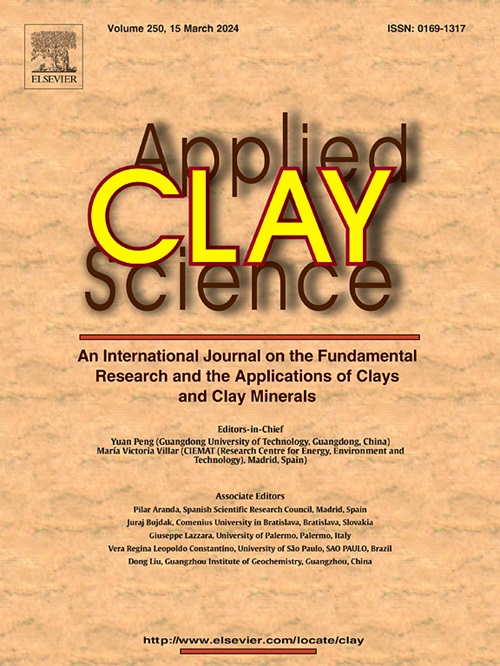Mechanochemical activation of non-conventional precursors for use as suplementary cementitious materials
IF 5.3
2区 地球科学
Q2 CHEMISTRY, PHYSICAL
引用次数: 0
Abstract
This work analyzes the effect of Mechanochemical Activation (MA) of a Commercial low-grade kaolinite and low-grade illite, a feldspar, a diatomite and a clayey soil (non-commercial) as supplementary cementitious materials. Milling was conducted at different times for up to 360 min. MA decreased the particles size and increased the specific surface area except for low-grade illite. However, prolonged milling produced agglomeration in feldspar, diatomite and clayey soil. MA partially reduced diffractogram peaks and modified the dehydroxylation losses of mass in the thermogravimetric tests. MA's effect over the solubility of SiO2 and Al2O3 was not conclusive, with differences among aluminosilicate minerals and with no relationships with their physical parameters or chemical structures. Feldspar was the only one not to show Strength Activity Index (SAI) increases due to MA. Low-grade illite, feldspar and diatomite combinations surpassed 75 % on the SAI. No clear relationships were observed between the combinations SAI and their physical parameters, chemical structure or SiO2 and Al2O3 availability.
求助全文
约1分钟内获得全文
求助全文
来源期刊

Applied Clay Science
地学-矿物学
CiteScore
10.30
自引率
10.70%
发文量
289
审稿时长
39 days
期刊介绍:
Applied Clay Science aims to be an international journal attracting high quality scientific papers on clays and clay minerals, including research papers, reviews, and technical notes. The journal covers typical subjects of Fundamental and Applied Clay Science such as:
• Synthesis and purification
• Structural, crystallographic and mineralogical properties of clays and clay minerals
• Thermal properties of clays and clay minerals
• Physico-chemical properties including i) surface and interface properties; ii) thermodynamic properties; iii) mechanical properties
• Interaction with water, with polar and apolar molecules
• Colloidal properties and rheology
• Adsorption, Intercalation, Ionic exchange
• Genesis and deposits of clay minerals
• Geology and geochemistry of clays
• Modification of clays and clay minerals properties by thermal and physical treatments
• Modification by chemical treatments with organic and inorganic molecules(organoclays, pillared clays)
• Modification by biological microorganisms. etc...
 求助内容:
求助内容: 应助结果提醒方式:
应助结果提醒方式:


